Please note, links to all the Freedom Essays are included at the end of this essay. Open any essay to read, print, download, share or listen to (as an audio).
Freedom Essay 12
A one hour summarising talk that
introduces the WTM Deaf Effect Course
By Jeremy Griffith, 2015
Welcome to this introductory presentation to the WTM Deaf Effect Course. As biologist Jeremy Griffith introduced in The Great Guilt that causes the Deaf Effect and Video/Freedom Essay 1, and further explained in Video/Freedom Essay 11, while we humans have lacked the redeeming explanation of our seemingly horrifically flawed human condition, we had no choice but to live in deep psychological denial of the subject. It follows that when the redeeming understanding of that condition arrives, our practised denial will initially make it difficult for our minds to read the analysis. As soon as discussion of the human condition begins, the mind of almost every person becomes subconsciously alert to the fact they are being taken into what has been a completely off-limits realm and consequently starts blocking out what is being said. Your mind will find it difficult taking in or ‘hearing’ what is being said; it will suffer from a ‘DEAF EFFECT’ to what is being presented. To overcome this ‘deaf effect’, we have developed the WTM Deaf Effect Course—with this One hour summarising talk serving as the introductory presentation.
So, if you have begun to try to read/watch/listen to the explanation of the human condition, or are about to, then you will very likely benefit enormously from this first ‘deaf effect’-eroding presentation in the WTM Deaf Effect Course:
Make and see comments here
This presentation also appears as Video 12 in the Main Videos towards the top of our homepage at www.humancondition.com.
The Transcript of this video
I want to begin by introducing the issue of the human condition.
I might start by putting up this little drawing I’ve done. It shows the proverbial ‘elephant in the living room’ of our lives, which is a metaphor that refers to an extremely important issue or subject, but one that no one acknowledges.
Well, this subject of the human condition is the elephant of elephants in our living rooms. In fact, you can see the elephant is absolutely filling the room to the extent that there is hardly any space left. And this is what the human condition is—the most fundamental and serious of issues but one that has been so difficult to deal with that we’ve learnt to just block it out of our mind.
So we say ‘Pass the salt’, and ‘How are you going with your football team?’, etc, etc. All this dialogue takes place and yet the huge elephant in the room is being ignored. That’s how amazing the situation has been—there’s this massive issue that no one has been addressing!
Okay, so what is the human condition and why have we been living in such fear of it that we can hardly recognise it even exists, and yet it’s the underlying issue in all of human life?
The human condition is the issue of ‘good and evil’ in human makeup—the issue of why aren’t we humans ideally behaved. Since the universally accepted ideals are to be cooperative, loving and selfless, why on earth are we the complete opposite—competitive, aggressive and selfish? In fact, why are we so ruthlessly competitive and selfish and brutal that life has become all but unbearable and we’ve nearly destroyed our own planet!? I mean, why do we thinking, reasoning, rational, immensely clever, supposedly sensible beings behave so badly and cause so much suffering and devastation?
The French polymath Blaise Pascal spelt out the full horror of our contradictory nature when he wrote: ‘What a chimera then is man! What a novelty [novelty because we have this amazing conscious mind], what a monster, what a chaos, what a contradiction, what a prodigy! [capable of being a] Judge of all things, [yet an] imbecile worm of the earth, repository of truth, a sewer of uncertainty and error, [humans are] the glory and the scum of the universe!’ (Pensées, 1669). William Shakespeare makes a similar observation in Hamlet, writing, ‘What a piece of work is a man! How noble in reason! How infinite in faculty!…In action how like an angel! In apprehension how like a god! The beauty of the world! The paragon of animals! And yet, to me, what is this quintessence of dust? [Brutal and barbaric] Man delights not me’ (Hamlet, 1603)!!
Yes, half of the human head is this giant association cortex. We have this incredible brain that can think and reason. We are the most brilliantly clever of creatures, the ones who are, as Pascal and Shakespeare said, ‘like a god’ in our ‘infinite’ ‘faculty’ of ‘reason’ and ‘apprehension’, a glorious ‘angel’-like prodigy capable of being ‘judge of all things’ and a ‘repository of truth’. Yet we are also the meanest of creatures, the most vicious, most capable of inflicting pain, cruelty, suffering and degradation—a species that behaves so appallingly we seem to be ‘monsters’, ‘imbecile[s]’, ‘a sewer of uncertainty and error’ and ‘chaos’, ‘this quintessence of dust’, ‘the scum of the universe’!
So there is this huge paradox about being a human. How could we humans possibly be considered good when all the evidence seems to unequivocally indicate we are a flawed, bad, even evil, species? Are we some sort of evolutionary mistake? A cancer in the universe? Or could we possibly be divine beings?
Now, this issue of our contradictory nature, this question of questions of our human condition, is such a fearful question that the more we thought about it, the more depressed our thinking became. As a result, we humans learnt to block out the issue—avoid thinking about it. As the famous psychoanalyst Carl Jung said, ‘When it [our shadow, the darker aspects of our nature] appears…it is quite within the bounds of possibility for a man to recognize the relative evil of his nature, but it is a rare and shattering experience for him to gaze into the face of absolute evil’ (Aion: Researches into the Phenomenology of the Self, 1959; tr. R. Hull, The Collected Works of C.G. Jung, Vol. 9/2, p.10). [Learn more about what exactly the human condition is in The Great Guilt and the Video/F. Essay 10.]
Yes, this ‘face of absolute evil’ is the ‘shattering’ possibility—if we humans allow our minds to think about it—that we might indeed be a terrible mistake. So there is this huge dilemma about being a human, that without understanding of, we had no choice but to block out of our mind—to, in fact, resign ourselves to not asking and addressing that question until such time we could find an answer to it.
That might all sound extraordinary, but as all humans grow up they do start thinking about the imperfection of human existence—they do start wrestling with this issue of the human condition—from about the age of 12 onwards. And for some reason that they don’t understand, adults don’t seem to want to talk about this huge issue, this huge ‘elephant’, this horrific issue of why aren’t humans ideally behaved. And so adolescents are left to wrestle with the issue on their own, and their thinking goes deeper and deeper, until at about 13 or 14 years of age the issue of the imperfection of the world around them starts to develop into the issue of why aren’t they themselves ideally behaved.
They start to discover aspects of anger, egocentricity, selfishness and indifference to others within themselves. And so the issue of the human condition ‘without’ becomes the issue of the human condition ‘within’, and when that happens adolescents begin to become suicidally depressed. And to avoid that horrific self-confrontation they are left with no choice but to resign themselves to never again looking at that issue of the human condition. This transition from confronting the human condition to living in denial of it is the process I refer to as ‘Resignation’.
Catherine Yeulet/iStockphoto; yamasan/AdobeStock; Al Troin/AdobeStock
When adolescents are between the ages of 12 and 15 teachers and parents do find them unreachable—they’re in their room playing loud music and they snap when they’re talked to. Sure, we blame these well-known struggles of adolescence on the hormonal upheaval that accompanies puberty, the so-called ‘puberty blues’, but it’s not due to puberty and hormones. The clue is in the word ‘blues’, which means depression; it’s a psychological problem, not a physical one. And sure, at 13 or 14, kids are entering sexual maturity, but physically that’s about the healthiest time in their life. For them to be seriously depressed to the point that they get glandular fever, a debilitating illness that often occurs in mid-adolescence, there’s clearly a much more serious, psychological battle going on. But because adults can’t deal with the issue of the human condition, they have come up with this excuse that the adolescent is ‘just going through puberty’, that it’s a puberty-related ‘kissing disease’, that it’s their surging hormones. But humans have been living with the adjustment of puberty since animals first became sexual, so we’re hugely adapted to that. What we haven’t become adapted to is the horror of the imperfections of human life and trying to understand that. We are thinking, understanding beings, so when we are adolescents we try to make sense of that imperfection, but adults, being already resigned, don’t want to go near the subject. I mean, two days after adolescents have resigned you can hardly get them to remember that terrifying corner where they were still facing the human condition, so terrible was the encounter. You can read about Resignation in F. Essay 30, and in chapter 2:2 of my book FREEDOM: The End Of The Human Condition, but the point of mentioning it is that it provides the easiest way to evidence just how fearful a subject the human condition has been—just how serious this ‘elephant’ is that we can’t look at.
The following then is a rare description of an adult—a psychiatrist—talking to an adolescent going through Resignation. It’s from the American Pulitzer Prize-winning child psychiatrist Robert Coles: ‘I tell of the loneliness many young people feel…It’s a loneliness that has to do with a self-imposed judgment of sorts…I remember…a young man of fifteen who engaged in light banter, only to shut down, shake his head, refuse to talk at all when his own life and troubles became the subject at hand. He had stopped going to school…he sat in his room for hours listening to rock music, the door closed…I asked him about his head-shaking behavior: I wondered whom he was thereby addressing. He replied: “No one.” I hesitated, gulped a bit as I took a chance: “Not yourself?” He looked right at me now in a sustained stare, for the first time. “Why do you say that?” [he asked]…I decided not to answer the question in the manner that I was trained [basically, ‘trained’ in avoiding what the human condition really is]…Instead, with some unease…I heard myself saying this: “I’ve been there; I remember being there—remember when I felt I couldn’t say a word to anyone”…The young man kept staring at me, didn’t speak…When he took out his handkerchief and wiped his eyes, I realized they had begun to fill’ (The Moral Intelligence of Children, 1996, pp.143–144 of 218).
Mygate/Shutterstock; Susan Stevenson/AdobeStock; Sabphoto/AdobeStock
The boy was in tears because Coles had reached him with some recognition and appreciation of what he was so desperately wrestling with. Coles had shown some honesty about what the boy could see and was struggling with, namely the horror of the utter hypocrisy of human life, including his own. The boy is in the midst of Resignation, of accepting that he has to give up trying to make sense of the human condition, this amazing riddle of why humans are so divisively behaved when ideally they should be the complete opposite. And no one’s talking about it because once you’ve resigned, you are on a mission to escape that dark corner and that dark issue. You’re on a mission of self-distraction. Adults just tell jokes all day and talk about the weather and just keep babbling away about meaningless things, keeping away from that dreadful issue.
Stanislaw Mikulski/AdobeStock; mitarart/AdobeStock
As you’ll see in chapter 2 of FREEDOM, to make sense of adult behaviour all you have to do is factor in that they are resigned and are living in denial of the human condition—that all their behaviour is being driven by maintaining that denial.
So, yes, the human condition has been a horrific, unconfrontable subject while we couldn’t explain it. I’ve heard it described as ‘the personal unspeakable’ and ‘the black box inside of humans they can’t go near’ (personal conversations, WTM records, Feb. 1995). So that’s why this issue has been the great elephant in our living room, the all important issue, but the one issue adults could hardly admit existed, let alone think about.
To now supply some evidence of how pervasive this denial of this horrific subject of the human condition is. Philosophy is ‘the study of truths underlying all reality’, and the greatest philosopher of all time is generally considered to be Plato. Indeed, Alfred North Whitehead, who was considered one of the greatest philosophers of the twentieth century, said that all of philosophy is merely ‘a series of footnotes to Plato’. So whatever Plato had to say was obviously incredibly profound.
So Plato is the greatest philosopher in the study of the truths underlying all reality; what then was his central insight? Well, Plato’s most highly regarded work is called The Republic and at the centre of The Republic is the allegory of a cave where humans are hiding from the issue of the human condition. So this is the greatest philosopher of all time, philosophy again being ‘the study of truths underlying all reality’, and he’s saying that what I have to tell you is that the most dominant feature about human existence is that humans are so afraid of this issue of the human condition that they are living deep underground in a cave so they don’t have to face it. They have created a whole world of block-out and denial inside this cave.
This is what Plato actually wrote, and this was written c.360 BC: ‘I want you to go on to picture the enlightenment or ignorance of our human conditions somewhat as follows. Imagine an underground chamber, like a cave with an entrance open to the daylight and running a long way underground. In this chamber are men who have been prisoners there.’ Now, in this cave allegory Plato went on to describe how the cave’s exit is blocked by a fire, such that if one of the prisoners were ‘to stand up and turn his head and look and walk towards the fire; all these actions would be painful…and he would [have to] turn back and take refuge’ in the cave of ‘shadows’, which are only an ‘illusion’ of the real world outside the cave. The allegory makes clear that while ‘the light of the fire in the cave prison [corresponds] to the power of the sun’, and ‘the sun…makes the things we see visible’, such that without it we can only ‘see dimly and appear to be almost blind’, having to hide in the ‘cave’ of ‘illusion’ and endure ‘almost blind’ alienation was infinitely preferable to facing the searing, ‘painful’ ‘light’ of the ‘fire’/‘sun’ that would make ‘visible’ the unbearably depressing issue of ‘the imperfections of human life’. (See par. 83 of FREEDOM, or you can view all these quotes highlighted where they actually appear in The Republic at www.wtmsources.com/227.)
So, that is how serious and terrifying an issue the human condition has been—we humans are, according to this greatest philosopher, living deep underground, hiding in a cave of darkness, in order to cope. [You can read more about Plato’s cave analogy in the previous Video/F. Essay 11.]
Now, it makes sense that in the absence of understanding of the human condition we needed to come up with some excuse for why we are divisively instead of cooperatively and lovingly behaved in order to cope with the negative implications. And so we’ve obviously done that. As explained in Video/F. Essay 2, we came up with the excuse that our behaviour is no different from that seen in the animal kingdom; that we humans are competitive, aggressive, and selfish because of our animal heritage. We argued that we are the victims of savage animal instincts within us that compel us to ruthlessly fight and compete for food, shelter, territory and a mate—that we are at the mercy of a biological need to reproduce our genes—and that’s why we’re being so competitive and aggressive and not cooperative and loving. [You can read more about the false savage instincts excuse, and the psychology behind its use, in Video/F. Essay 14 & F. Essay 20.]
But of course this reason that biologists today have been putting forward can’t be the real cause of our competitive and divisive behaviour, because descriptions of human behaviour such as egocentric, arrogant, inspired, depressed, deluded, pessimistic, optimistic, artificial, hateful, cynical, mean, immoral, guilt-ridden, evil, psychotic, neurotic, alienated, all recognise the involvement in our species of a unique, fully conscious thinking mind, that there’s a psychological dimension to our behaviour. Humans have suffered not from the genetic-opportunism-based, non-psychological animal condition, but the conscious-mind-based, PSYCHOLOGICALLY troubled HUMAN CONDITION.

While our competitive, aggressive and selfish behaviour has been blamed on brutal, must-reproduce-
your-genes animal instincts, the truth is humans have suffered not from the genetic-opportunism-
based, non-psychological animal condition, but the conscious-mind-based, PSYCHOLOGICALLY
troubled HUMAN CONDITION. This critical distinction is explained in Video/F. Essay 14 & F. Essay 20.
Of course, the other obvious reason that the old ‘animals are competitive and aggressive and that’s why we are’-defence simply doesn’t hold water is that we humans do not have competitive, aggressive instincts, but cooperative, loving, moral instincts, the expression of which, or voice within us, is what we call our conscience. In fact, the reason adolescents become so depressed during Resignation and why they don’t fall for and adopt the savage instincts excuse (at least not while they’re in the midst of Resignation—later on they grab it with glee, but before they’ve resigned they don’t buy it) is because their moral, instinctive self or soul makes them aware that ideally they should be cooperative and loving. The fundamental reason humans have a sense of guilt is because we have a moral conscience. As I fully explain in chapter 5 of FREEDOM, and summarise in F. Essay 21, our species’ instinctive heritage is one of being cooperative and loving, not of being competitive and aggressive.
So yes, in truth we do all know that the old ‘animals are competitive and aggressive and that’s why we are’-defence doesn’t hold water. It doesn’t explain our psychologically distressed, guilt-ridden human condition. So that’s where the human race and biology has been stalled, waiting, in an increasingly distressed state, for the real explanation for our psychologically troubled, guilt-ridden human condition that will finally make sense of the dilemma of human life—bring understanding and peace to the human mind at the most profound, fundamental, deep, fully accountable, truthful level.
So we needed the psychosis-addressing-and-solving, real explanation of the human condition. The excuse that we’re competitive and aggressive because of our animal heritage obviously helped us get by while we waited for the real explanation; it was part of the dishonest ‘shadows’ in the cave that Plato described, which were only an ‘illusion’ of the real world—a dishonesty that meant we could only ‘see dimly and appear to be almost blind’ to the truth about our human condition. But we’ve now reached the point where we desperately need that ‘blind[ness]’/alienation/psychosis-ending, real explanation, the one that really deals with and explains the psychological dilemma of the human condition. Bringing relieving understanding to the psychosis in humans is what finally alleviates that psychosis and brings about the transformation of the human race through the dignifying understanding of the dark side of ourselves—of our ‘shadow’, as Jung called it. It makes sense of the dark side of ourselves so no longer can it distress and trouble us.
Michael Leunig is an Australian cartoonist. Quite a few of his cartoons are in FREEDOM and the following is another deadly honest one. It shows this great tangle of confusion. I mean, what Leunig depicts is what it’s been like trying to make sense of human life up to the present. It’s just been impossible, just one gigantic mystery. How on earth do you make sense of this confusion? People talk to each other all day long, but they’re not penetrating the problem that we’re really burdened with; they’re not unravelling the tangle of what it is to be human. So it’s all just a big confusing mess.
Unless we found understanding of the human condition, we as a species would end in this total mess of confusion and bewilderment about why we are the way we are. The ultimate knowledge we needed was to understand the human condition. When we can finally make sense of that, the whole tangle will unravel. So Leunig’s cartoon is a very powerful metaphor of our state of ignorance—of not being able to understand ourselves, to make sense of the dark side of ourselves, to truthfully understand the psychosis within us, to understand where all the pain and suffering and frustration is coming from.
Okay, so that’s how important the explanation of the psychologically distressed, guilt-ridden human condition is. That dignifying understanding is the only thing that can really alleviate the suffering in the world!
I now want to present the redeeming and psychologically healing explanation of the human condition that I’m saying is fully accountable and therefore true, and which is presented fully in FREEDOM. [The explanation was introduced in THE Interview, and there’s also a fuller explanation in Chapter 3.]
To provide this explanation, I’ll use a simple analogy.
If you think honestly about the human situation, the explanation of our condition is not that hard to find if you consider what it is about humans that is unique: we are fully conscious. And if you think more about that, before we became a fully conscious species, we humans must have been controlled by instincts that were acquired through natural selection, as other animals are. And obviously when we became conscious, the conscious mind could make sense of experience, understand cause and effect. Nerves were originally developed for the coordination of movement in animals, but, once developed, their ability to store impressions—what we refer to as ‘memory’—gave rise to the potential to develop understanding of cause and effect. If you can remember past events, you can compare them with current events and you can deduce commonly occurring events, and on the basis of what’s commonly occurred in the past you can start to make predictions about what’s likely to occur in the future, which can provide further feedback to refine your insights further and further.
Now, if sufficiently developed, this ability to understand and make sense of experience, of cause and effect, means you can then understand/reason how experiences are related; you can become conscious. So presumably this huge ‘association cortex’, as it is called, in our head that associates or compares information and by so doing is able to make sense of experience, became, in our case, sufficiently developed for us to become fully conscious. [See F. Essay 24 for the explanation of how consciousness emerged in humans.] At that point, it follows that we humans would have been able to take control from our instincts for the management of our lives because now that we can understand how the world works, we can reason with ourselves how to do things. In other words, at a certain point, when we became conscious, we must have challenged our original instinctive orientations for the management of our lives. And if we think about that, it makes sense that there must have been a clash between these two aspects of ourselves—between our gene-based instinctive learning/orientating system and our newer conscious mind that could understand the world.
[F. Essay 53, which is titled The instinct vs intellect is the obvious and real explanation of the human condition, as all these great thinkers evidence, demonstrates how readily apparent the instinct vs intellect elements of the human condition are when someone is prepared to think honestly and truthfully about the subject. You can find a link to it at the end of this essay.]
So, using a very simple analogy, I will now create a scenario to simulate and explain the human condition and, in fact, all aspects of human life. The aim is to show you what would happen if we were to put a fully conscious mind inside the head of an animal that’s already instinctively controlled. So let’s grab a stork, a big bird (because we want him to have the capacity to carry this big brain), and let’s implant a fully conscious mind into its head. We’ll call him Adam Stork because this analogy has similarities to the story of the Garden of Eden, where Adam and Eve take the fruit from the tree of knowledge—they become conscious, and start searching for understanding. In that story, Adam and Eve, us humans, are banished as bad and evil. This story, however, has a very different outcome.
So, we’ve got Adam Stork and we’ve put this big brain in his head.
Now, storks breed during summer time on the rooftops in Europe and then, when winter arrives and it’s cold, they migrate back down the coast of Africa to feed in the swamps of South Africa. Of course, this migration is not an understanding of where they should or shouldn’t fly. It is only an orientation acquired through thousands of years of natural selection where, for example, all the storks with the genetic makeup that inclined them to fly across the Sahara Desert got frizzled, so now all the storks are orientated to fly around the coast of Africa. They have that perfect instinctive orientation where to fly and where not to fly, but of course they don’t understand where they should or shouldn’t fly.
So, what would happen if we were to graft a fully conscious mind, such as humans have, into the head of one of these storks? And, let’s then imagine, we are able to sit behind Adam Stork in an ultra-light plane and see what happens. Well, we see that Adam Stork is flapping along with the other storks, perfectly instinctively oriented, but then he starts to think for himself. He says, ‘I can see an island down there with some apple trees, I think I’ll fly down and get some apples.’
So Adam heads off course to carry out his first grand experiment in self-adjustment. But what’s going to happen? His instinctive flight path doesn’t go down to the island, so his instinctive self is going to try to pull him back onto the flight path. So this stork [referring to the right-hand stork in the above Adam Stork picture] represents his instinctive self and the other storks represent those who haven’t yet got a fully conscious mind. They all want him to stay on this course, saying, in effect, ‘You should stay on course here Adam, you’re flying off course.’
Now, Adam has two choices. He can fly back on course and his instinctive self and the other storks will be happy and not criticise him. But he’s got a conscious mind; he has to search for knowledge—he can’t cut his brain out and throw it away. So after a while he realises he has to persevere with his search for knowledge because it’s only by carrying out these experiments in self-management that he’ll find out what are the right and the wrong understandings. So he decides, ‘I can’t explain it but I have to do what I have to do. I’m going to have to persevere with these experiments.’
Then Adam comes across another island and thinks, ‘I’ll fly down there and have a rest’, and so he carries out another experiment in self-adjustment. Again, his instincts criticise him for flying off course. This red jagged line between the two storks in the drawing represents the clash [referring to the above Adam Stork picture]. The problem is Adam can’t sit down with his instinctive self and, in effect, say, ‘Just hold it right there before everything goes off the rails. While you are perfectly oriented about where to fly and where not to fly, you don’t understand where we should fly. I’m an understanding system. I need to understand why I should fly that way and not this way. So by all means, tell me when I’m off course but don’t criticise me for carrying out these experiments in self-adjustment.’ If he could have had this conversation this war within himself wouldn’t have occurred.
Adam Stork is clearly in a catch-22 situation: he has no knowledge at this point—he can’t defend what he’s doing, so he can’t explain himself. And so, unable to explain himself, three things unavoidably happened. He tried to block out the criticism, ‘I don’t want to listen to it. I’m not bad, I can’t explain why but I’m not.’ He became angry towards the criticism. He said, ‘Listen! I’m not bad for flying off course. I have to do it but I can’t explain why I have to do it!’ And he became egocentric. ‘Ego’, if you look it up in the dictionary, means ‘conscious thinking self’; it’s just another word for the intellect. So the ego or conscious thinking self became centred or focused on trying to validate itself. Adam became ego-centric, needing a win out of every situation, needing some reinforcement to relieve himself of the criticism he’s having to live with.
So, Adam Stork has become alienated, angry and egocentric—and actually, the so-called Seven Deadly Sins can be rounded up under these three behaviours. He/we humans—because it was our species that became conscious—became sufferers of the human condition.
Most significantly, if we stand back and look at this situation, who’s the hero of the story? Surely it’s Adam—us humans—because he/we had to have the courage to fly off course and search for knowledge and suffer becoming an upset alienated, angry and egocentric individual until he/we found sufficient knowledge to explain himself/ourselves.
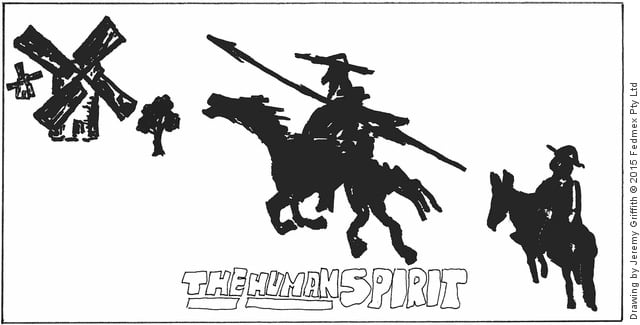
A picture by Jeremy Griffith showing Don Quixote ‘tilting at windmills’, a metaphor for the incredible
courage of countless generations of humans as they charged at the overwhelming problem of the
human condition in order that one day humanity would be able to explain our fundamental goodness.
Joe Darion’s lyrics of the song The Impossible Dream, which featured in the 1965 musical about Don Quixote, the Man of La Mancha, express the paradox of the situation in the line, we had ‘to be prepared to march into hell for a heavenly cause’. We had to lose ourselves to find ourselves. We had to suffer becoming upset in order to find knowledge, ultimately sufficient knowledge to explain and understand why we had to defy our instincts and suffer becoming upset. And, after some two million years (because that’s how long humans have been fully conscious), it’s that sufficient knowledge that’s finally been presented in FREEDOM.
Science has finally made it possible to redeem ourselves because it has finally made it possible to explain the difference between the gene-based learning system, which gives species orientations, and the nerve-based learning system, which makes it possible to understand the world.
We can now see that the Biblical story of Adam and Eve in the Garden of Eden accurately describes the primary situation involved in our human condition of the psychologically upsetting battle that emerged between our instincts and our conscious intellect’s search for knowledge. It says Adam and Eve/we took the ‘fruit’ (Genesis 3:3) ‘from the tree of knowledge’ (Gen. 2:9, 17) and were ‘disobedient’ (the term widely used in descriptions of Gen. 3). In other words, we developed a conscious mind and free will. But in that pre-scientific story it says Adam and Eve then became sinful and as a result were ‘banished…from the Garden of Eden’ (Gen. 3:23) of our species’ particular cooperative and loving, innocent instinctive state for having become ‘evil’ (Gen. 3:22), whereas this scientific presentation says, ‘No, no, that story got it wrong’. Adam and Eve/we are actually the heroes of the whole story of life on Earth. This is because the conscious mind is surely nature’s greatest invention, and to be given this task of searching for understanding when the whole world is condemning you—because all the other innocent storks and all of nature, the sun coming up, the rain, the clouds, the natural world is associated with our original instinctive self—was the most difficult of tasks imaginable. The whole world, in effect, ganged up on us, condemned our search for knowledge—but that condemnation was never justified. All the time, Adam Stork/we humans were good and not bad, but we couldn’t explain why.
Imagine the agony of the situation; for example, imagine living in a village where everyone had agreed not to plant weeds, and yet you had to plant thistles but couldn’t explain why. After just one day the people in your village are going to be putting dead cats in your letterbox and refusing to talk to you at the shops. The situation would be horrible after just one day of that condemnation and ostracism; well, imagine two million years of living on this planet unjustly condemned!
So not until science (which literally means ‘knowledge’, derived as it is from the Latin word scientia) found the key understanding that makes explanation of the human condition possible (which is that the gene-based learning system can only orientate a species while nerve-based learning system, the conscious mind, needs to understand the world) could we finally relieve ourselves of the agony of the human condition. And the ultimate knowledge we needed was understanding of the human condition, the explanation for why we’re good and not bad after all. Then, and only then, could this great burden of guilt be lifted off the shoulders of the human race and everyone finally relax and understand themselves and look into this dark corner of the human condition within themselves without recrimination.
This is a massive breakthrough—because it obviously wasn’t Adam Stork but us humans who became fully conscious and suffered this horrific split between our instinctive self or soul and our newer conscious self. And this story, you’ll see, gets even more complicated because our instinctive orientation wasn’t to some flight path, but to actually behaving in a cooperative, loving way.
As I said earlier, we humans have a moral conscience that wants us to behave selflessly. How we acquired an unconditionally selfless, altruistic moral conscience is one of the great mysteries of biology, but you’ll see it was another one of those explanations that we couldn’t access until we could explain the human condition. When you explain the human condition, suddenly all the ‘cave speak’, all the dishonest excuses we employed in the cave, such as that we have savage animal instincts, can be dispensed with and we can get out into the sun and live with the truth and move on from it into a human-condition-resolved new world.
So now we can explain how we humans acquired our unconditionally selfless, moral instincts. And, as I explain in chapter 5 of FREEDOM and in F. Essay 21, it was achieved through nurturing, a mother’s seeming unconditionally selfless love of her infant. Immediately you can see how this has been an unbearably confronting truth that we had to deny while we couldn’t explain why we had become so alienated and selfish and unable to be unconditionally loving. No child has been adequately nurtured while the horrific battle to find knowledge has been going on. And until we could explain that upsetting battle, we couldn’t admit the unbearable truth that nurturing is what made us human.
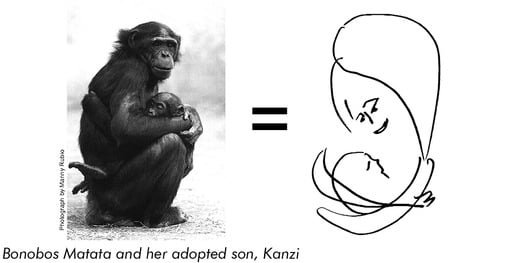
Drawing by J.Griffith © 2006 Fedmex Pty Ltd
As is explained in F. Essay 21, bonobos closely resemble our human ancestors,
and evidence the role of nurturing in our development.
Yes, it is only now that we can explain why we became upset that all our defensive and evasive ways of coping can end. It’s only now that we can leave Plato’s cave of dishonest denial, come out from underground and live in the warm, healing sunshine of understanding.
So that is a brief explanation of our upset human condition—and when you think about it, it is really an obvious explanation, which as mentioned, is why other thinkers have also identified the main elements involved [see F. Essay 53]. We became conscious and were then at war with our instincts, with the result of this conflict being our psychosis. ‘Psych’ means soul from the Greek word psychē, and ‘osis’ means sickness or illness. The human mind became preoccupied with denial, so we became psychotic and neurotic, ‘neuron’ meaning nerves, ‘intellect-illness’.
This is the explanation of the psychologically upset state of the human condition. And it’s only through finding this explanation that the psychosis can be relieved, that the human race can finally be healed at the deepest fundamental level. Finding this explanation brings understanding to the dark side of ourselves.
So science is the liberator of humanity, the ‘messiah’ if you like—because science makes it possible at last to explain that we’re good and not bad after all. Science found the double helix (DNA), it found the understanding of how the gene-based learning system works, and the principles behind natural selection, and the understanding about nerves and how they can develop memory and that once you’ve got memory you can compare experiences and so on and you become conscious.
So it’s the ability now to explain the difference between the nerve-based and gene-based learning system or information processing systems that finally allows us to ameliorate or bring peace to our psychologically-troubled human condition—and by so doing, transform the human race from a human-condition-stricken state to a human-condition-free state. [You can read about how everyone’s lives can immediately be transformed in F. Essay 15.]
That is essentially what my book presents.
I might quickly explain this cover of my book FREEDOM: The End Of The Human Condition [shown below]. It’s got this great big sun here saying FREEDOM and so FREEDOM is the ultimate war cry for humanity when it finally breaks through into the clear and finds the relieving understanding of ourselves. And the sun has always been the image of knowledge, understanding. So the sun coming up has been the historical symbol of humans having finally broken through and relieved themselves of the human condition—and the one word you say when you do that is FREEDOM. And to explain what you mean by that FREEDOM you would say that the human condition has been brought to an end, you are free.
So [referring to the book’s title and subtitle], ‘FREEDOM: The End Of The Human Condition: At last, the redeeming, reconciling, and rehabilitating biological explanation of the human condition that brings about the dreamed of dawn of understanding [sun coming up] and ends all the suffering and conflict on Earth’—which is why there are these people on the cover depicted as jumping for joy.
The imagery of the sun representing freedom, finding knowledge, the dawn of understanding of ourselves, has been with us since time immemorial, and so I might just play some music about this. This is Jim Morrison from The Doors singing their 1968 song Waiting for the Sun. Listen to the words: ‘♫ At first flash of Eden / We race down to the sea / Standing there on freedom’s shore / Waiting for the sun / Waiting for the sun / Waiting for the sun / …Waiting for you to tell me what went wrong ♫’
Note the keywords: ‘freedom…waiting…race down…freedom’s shore…waiting for the sun [understanding]…to tell me [us] what went wrong [why did we become sufferers of the human condition]’.
You might wonder why Jim Morrison and his band members called themselves ‘The Doors’. The name comes from William Blake’s poem, The Marriage of Heaven and Hell, and you can see in that title that Blake was anticipating the time when heaven and hell, the good and the bad in us, would finally be reconciled. It recognises the time that has now arrived of the reconciliation of the polar opposites in our makeup. In his book The Marriage of Heaven and Hell, Blake wrote of a time ‘When the doors of perception are cleansed, man will see things as they truly are. For man has closed himself up, till he sees all things through narrow chinks of his cavern’ (1790). The ‘cavern’ is similar to Plato’s metaphorical cave in which we have had to hide. To return to the Adam Stork analogy, Blake is saying that one day, when we can reconcile this present upset state of anger, egocentricity and alienation with our species’ past innocent state (basically heal our divided condition, our split nature) we will no longer be preoccupied with denial and anger and egocentricity and suddenly we’ll be able to see the world as it really is. You see, every minute of every day we humans have been trying to get a win for our insecure ego—positioning ourselves to cope, trying to make ourselves successful and get some relief from the insecurity caused by not being able to understand why we’re good and not bad.
So, ‘When the doors of perception are cleansed, [when we can make sense of us] man WILL see things as they truly are’. That’s what happens when you find this understanding and you digest it; it’ll bring you back to life. I mean, that’s what that other song by The Doors, Break On Through [1966], was looking forward to: ‘♫ You know the day destroys the night / Night divides the day / Tried to run / Tried to hide / Break on through to the other side ♫’
A lot of truth is hidden in songs because for the most part we had to block out of our mind the truth about our species’ lost state of innocence. It was an unbearable truth but, nevertheless, there does exist within us this fabulous, exciting hope and dream that one day we would free ourselves from the human condition. We didn’t want to acknowledge the truth of the loving cooperative soulful world we once lived in, and of our anticipation of one day being able to return to it, because it would make having to live in our present massively upset, dark, soul-destroyed, cave-like world unbearable. But, nevertheless, every now and again that deeper truth of our journey from upset to freedom bubbled up to the surface in songs and in poetry. Rhyme and rhythm have been marvellous vehicles for allowing this bubbling up to occur—to let out some truth that otherwise we wouldn’t be able to express.
So, through the words of songs and poetry we let a lot of truth slip through our guard. So what has Jim Morrison said here: ‘You know the day destroys the night’? The ‘night’ is obviously living in this cave of dark denial, unable to confront the issue of the human condition. So the ‘day’ is the sun, the truth. The lyrics ‘Night divides the day’ is similar to Plato’s cave allegory, the night—the darkness—stops us looking into the day; it stops us confronting the sun.
Jim Morrison says, ‘Tried to run, Tried to hide’. We were evasive, we were trying to get a win out of all sorts of adventures and escapisms and we tried to hide from the truth by denying it. And we dreamed of this day when we could ‘Break on through to the other side’. But the other side of what? Of this dark, horrible state we’ve had to live in. Someone once asked me what I thought of Jim Morrison because he seemed to have virtually suicided which was such a tragedy, he just self-destroyed with drugs. But that’s the thing about Jim Morrison—he was such an heroic person. He, in effect, decided, ‘Look, I don’t want to live in this bloody cave. If I can’t get out in the sun, if I can’t ‘break on through to the other side’, I don’t want to be a part of this ugliness and madness anymore.’ So he just sort of self-destroyed with drugs and so forth. He was incredibly honest. (Of course, humans also had to have the courage and fortitude to bear our ever increasingly corrupt state in order to persevere with the all-important search for knowledge.)
So yes, you can see in the lyrics of Break On Through the whole story of the human condition. There are a lot of other songs that I might quickly mention that show you how much truth can come through in songs.
Consider Bono’s words from the 1987 U2 song Where The Streets Have No Name: ‘I want to tear down the walls that hold us inside [so that’s the cave again], I want to reach out and touch the flame [the truth which has been horribly confronting], where the streets have no name [I want to go to this place where there’s no longer any egocentricity where the streets don’t have any name]. I want to feel the sunlight on my face [there is the sun again], see the dust cloud disappear without a trace [I want to see the end of the human condition].’
And from U2’s 1988 song Love Rescue Me, ‘Love [truth] rescue me’. Love is truth ultimately. The ultimate form of love is compassion, is truth about ourselves; so ‘Love [truth] rescue me…raise me up…my own hands imprison me [my own actions have led to me being a horribly angry, egocentric and alienated human]…And the sun in the sky, makes a shadow of you and I [it exposes us]…I’m here without a name [I’m alienated], in the palace of my shame’. And then Bono has a funny little thing he adds at the end where he dreams of when we’re free of the human condition and he says, ‘I’ve conquered my past [found understanding of the human condition], the future is here at last, I stand at the entrance to a new world I can see. The ruins to the right of me, will soon have lost sight of me. Love rescue me.’ He’s basically pleading for the truth to turn up on this Godforsaken planet and save us from ourselves. Because if you think about the Adam Stork story, the price of searching for knowledge is becoming angry, egocentric and alienated. So the longer that search goes on without Adam finding that knowledge, the more angry, egocentric and alienated he becomes until he becomes fearfully, horrifically angry, egocentric and alienated. And that’s where the human race is right now. In fact, we are living on the threshold of terminal alienation, self-destruction. [Read more about the endgame situation humanity has arrived at in F. Essay 55.] So yes, we need ‘Love [truth to] rescue me [us].’
The 1967 rock musical Hair contained a song that pleaded to ‘Let the sun shine in’, as well as the song Aquarius that similarly anticipates the time of ‘Harmony and understanding, sympathy and trust abounding. No more falsehoods or derisions [all the dishonesty from the sort of bullshit we talk about and all the excuses we used inside the cave, because we couldn’t face the truth, are no longer necessary], golden living dreams of visions, mystic crystal revelation and the mind’s true liberation [how more clear a description of our freedom from the human condition can you get than that]. Aquarius!…As our hearts go beating through the night, we dance unto the dawn of day [there’s the sun again], to be the bearers of the water, our light will lead the way’. So those people at the bottom of the cover of FREEDOM dancing until the dawn of day? Well, that’s now arrived.
The words of Walter Earl Brown’s 1968 song If I Can Dream, which was performed by Elvis Presley, said, ‘There must be peace and understanding sometime, strong winds of promise that will blow away all the doubt and fear. If I can dream of a warmer sun [there’s the sun again] where hope keeps shining on everyone…We’re trapped in a world that’s troubled with pain…Still I am sure that the answer’s gonna come somehow, out there in the dark, there’s a beckoning candle.’ I might mention that when writing this song, Brown said he was commissioned to write a song for Elvis and that the lyrics for it just wouldn’t come to him, but then in the middle of the night he had this epiphany and suddenly connected to all this material and it just came pouring out—in words that are such a truthful description of this time when finally we break through into the clear.
Cat Stevens (or Yusuf Islam as he’s now called) wrote the 1971 song Peace Train, which contained the lyrics ‘I’ve been smiling lately, dreaming about the world as one. And I believe it could be, some day it’s going to come. For out on the edge of darkness there rides a peace train [that’s almost the same as what Walter Earl Brown said, ‘out there in the dark, there’s a beckoning candle’]…[to] take me home again…everyone jump upon the peace train…come and join the living’—end this cave existence and take us home, because (as I explained in chapter 5 of my book FREEDOM and in F. Essay 21) before we became sufferers of the human condition, became conscious, we were living in this cooperative, loving state. So there is this dream to take us home again.
And in Changes IV [1971], Cat Stevens sang, ‘Don’t you feel a change is coming from another side of time, breaking down the walls of silence [all the dishonesty], lifting shadows from your mind [making sense of everything at last]…Yesterday has past, now let’s all start the living for the one that’s going to last [because this reconciling understanding puts an end to ‘upset’ forever. Because that’s what it is when Adam Stork becomes angry, egocentric, and alienated—‘upset’. We used to call it being ‘corrupted’ or ‘evil’, but that has negative connotations. It is a state of psychological upset, but it’s not a bad state, remember—it’s a massively heroic state. Adam and Eve Stork are the heroes of the story of life on Earth. That’s how wonderful we really are]…the day is coming that will stay and remain when your children see the answers…when the clouds have all gone…and the beauty of all things is uncovered again [similar to William Blake’s and The Doors’ desire to ‘see things as they truly are’]…Don’t you feel the day is coming…when the people of the world can all live in one room, when we shake off the ancient chains of our tomb’. That’s the cave analogy again.
Consider also Nobel Laureate Bob Dylan and his 1963 song When The Ship Comes In: ‘The hour that the ship comes in [what ship? The ship of understanding]…and the morning will be a-breaking [there’s the sun]…and the words that are used to get the ship confused [that means all the false, dishonest excuses we have used] will no longer be understood as the spoken [will not be understood as being the truth]…For the chains [holding the truth back] of the sea will have busted in the night…And like Goliath, they’ll be conquered’. All the dishonesty will be conquered by this understanding that obsoletes the need to live in all this dishonest denial.
And Bob Dylan’s 1964 song The Times They Are A-Changin’: ‘As the present now will later be past…For the times they are a-changin’.’ And from Creedence Clearwater Revival, John Fogerty’s 1970 song Who’ll Stop The Rain: ‘Long as I remember, the rain’s been coming down. Clouds of mystery pouring confusion on the ground. Good men through the ages trying to find the sun [there’s the sun again, namely understanding]. And I wonder, still I wonder who’ll stop the rain.’ [See F. Essay 45 for many more prophetic songs anticipating the arrival of liberating understanding of the human condition.]
There is this great hunger in the human heart that one day we would find this reconciling understanding. So that’s what I’m saying this book presents—the completion of that 2-million-year search for dignifying, relieving, psychologically healing, understanding of us. Understanding of why we’re good and not bad after all.
The composer Andrew Lloyd Webber wrote a requiem inspired, he said, by the story of a Cambodian boy who had been forced by the soldiers of Pol Pot to kill his sister. But how could such horror inspire such beautiful music? Surely it’s because there is this greater truth that stands above all the horror and suffering on this planet—which is that despite our capacity for evil, humans are still sublimely beautiful beings. Despite our capacity for evil, we are still good. So that’s how Lloyd Webber could write a requiem inspired by that horror. Because we lived in hope, faith and trust that, as Professor Harry Prosen says in his Introduction to FREEDOM, one day, probably from some secluded corner of the world, these answers might emerge. They’re not going to come out of the ivory towers of academia because, as Harry says, academia was built inside the cave. It’s all run by these scientists who are humans suffering from the human condition. So they’re all living in mortal fear of the subject of human condition. And as a result of that fear, they’ve invented all these dishonest ‘cave’ excuses for why we are the way we are. In chapter 2 of FREEDOM [and in Video/F. Essay 14 & F. Essay 40; see also Part 1 of Transform Your Life And Save The World] I go through and dismantle all the dishonest biological excuses and explain and reveal the hidden agenda—which is to try to find a way to deny the human condition; to not have to face it. We’ve built this castle of lies inside this cave and this book finally demolishes it.
This is the time that Alvin Toffler was anticipating when, in his seminal 1970 book Future Shock, he wrote of ‘the shattering stress and disorientation that we induce in individuals by subjecting them to too much change in too short a time’ (p.4 of 505). Yes, this is the ultimate future shock. We have been living in the dark cave of denial and suddenly the lights, as it were, have been turned on. When the blinds are drawn on our human situation, all manner of previously unconfrontable and thus denied truths are suddenly revealed, so this breakthrough brings with it a massive amount of exposure. FREEDOM is a veritable litany of heresies, such as that God can be demystified as the physical law of Negative Entropy [see F. Essay 23]; that human-condition-avoiding mechanistic science is leading humanity to terminal alienation [see F. Essay 40]; that the left-wing in politics is extremely dangerously dishonest and artificial [see F. Essay 35 and its book version, Death by Dogma]; that there’s been a difference in the roles between men and women in our species’ horrific journey to enlightenment [see F. Essays 26 & 27]; that there are differences in alienation between races [see F. Essay 28]; and so on. These insights are potentially extremely controversial, even incendiary. But that is what happens when you draw the blinds on the human condition—all the dishonesty that we’ve been practising and perfecting and mastering is exposed. Inside Plato’s metaphorical cave we’ve built this immaculately structured castle of lies that everyone has been party to, and since any bit of light/truth that crept in was immediately blocked out it had become almost impossible for anyone to break through all that denial and expose the lies—and look truthfully, and therefore effectively, into the human condition and find the human-race-liberating true explanation of it.
So it’s been a beautifully structured castle that everyone’s comfortable living within. But one day that all had to be demolished. So this is truth day, honesty day, exposure day; in fact, what we have historically referred to as ‘Judgment Day’, although ‘Judgment Day’ is not a time of condemnation but of relieving understanding. Nevertheless, it’s a massive shock that these understandings unavoidably bring. [For much more on this subject read F. Essay 40.]
This is the biggest paradigm shift the human race has ever had to face. It’s a massive shock because it all happens so suddenly. One day we’re living in the cave of denial, we’re confidently but deludedly parading around in there thinking there’s no other world, and suddenly it’s all exposed as a dark, totally superficial and artificial false world and a whole new world sun-drenched with understanding, sensitivity and beauty is introduced.
And then there is the problem that people assume when they’re reading a book that they will be familiar with the paradigm it is describing. If you use the analogy of a motor car, if someone invents a new spark plug and they write a book about it, people reading that can figure out pretty quickly what is being talked about because they are familiar with the basic design of cars. But this is wheeling in a whole new machine that we’ve never seen before, so you start reading this book and, as Harry Prosen says in his Introduction [see F. Essay 19], you go deeper and deeper into shock because it’s about a whole new world, and one that you’ve been resigned to living in denial of. Basically, as a resigned human you can’t believe that you’re ever going to read a book that actually gets in behind what the human condition really is and deals with and makes sense of it all.
So you start reading and you think, ‘Oh yeah, this might have a nice little angle on this or that subject’, but the possibility that someone’s actually got in behind the human condition and from there explained and exposed everything is almost beyond our wildest expectations and dreams. But that’s actually what’s happened, and thank goodness it has, and in the nick of time, because, as I said, the human race is heading ‘flat chat’ [full speed] towards terminal alienation [again, read more about the endgame situation humanity has arrived at in F. Essay 55]. All these floods of refugees and the suffering in the world is astronomical. And the only thing that could end it and transform the human race from a human-condition-stricken state to a human-condition-free state is this deeper understanding of why we are the way we are. Only that can bring this relieving understanding to ourselves, finally bring healing peace to the human condition.
– – – – – – – – – – – – – – – – – –
To continue the WTM Deaf Effect Course watch the interactive talks presented in Video/F. Essay 13.
And for further viewing or reading on the human condition and its resolution, we recommend THE Interview or chapter 3 of FREEDOM.
Discussion or comment on this essay is welcomed—see below.
Please Note, if you are online you can read, print, download or listen to (as a podcast) THE Interview, The Great Guilt, The Great Transformation, Sermon On The Beach or any of the following Freedom Essays by clicking on them, or you can find them all at www.humancondition.com.
INTRODUCTION TO THE EXPLANATION & RESOLUTION OF THE HUMAN CONDITION: THE Interview That Solves The Human Condition And Saves The World! | The Great Guilt that causes the Deaf Effect | The Great Transformation: How understanding the human condition actually transforms the human race | Sermon On The Beach | Freedom Essay 1 Your block to the most wonderful of all gifts | 2 The false ‘savage instincts’ excuse | 3 THE EXPLANATION of the human condition | 4 The ‘instinct vs intellect’ explanation is obvious – short | 5 The transformation of the human race | 6 Wonderfully illuminating interview | 7 Praise from Prof. Prosen | 8 “How this ends racism forever” | 9 “This is the real liberation of women” | 10 What exactly is the human condition? | 11 The difficulty of reading FREEDOM and the solution | 12 One hour summarising talk | 13 The WTM Deaf Effect Course | 14 Dishonest biology leads to human extinction | 15 How your life can immediately be transformed | 16 The Shock Of Change | THE BOOKS: 17 Commendations & WTM Centres | 18 FREEDOM chapter synopses | 19 FREEDOM’s significance by Prof. Prosen | 20 The genius of Transform Your Life | THE OTHER KEY BIOLOGICAL EXPLANATIONS: 21 How did we humans acquire our altruistic moral conscience? | 22 Fossil discoveries evidence our nurtured origins | 23 Integrative Meaning or ‘God’ | 24 How did consciousness emerge in humans? | 25 The truthful biology of life | • Survey seeking feedback | MEN & WOMEN RECONCILED: 26 Men and women reconciled | 27 Human sex and relationships explained | THE END OF RACISM: 28 The end of racism | 29 Can conflict ever end? | RESIGNATION: 30 Resignation | 31 Wordsworth’s all-revealing great poem | MORE ON THE TRANSFORMATION: 32 More on the Transformation | 33 Jeremy on how to become transformed | THE END OF POLITICS: 34 This understanding ends the polarised world of politics | 35 Death by Dogma left-wing threat | 36 Saving Western civilisation from left-wing dogma | 37 The meaning of superhero and disaster films | RELIGION DECIPHERED: 38 Noah’s Ark explained | 39 Christ explained | 40 Judgment Day finally explained | 41 Science’s scorn of religion | MEANING OF ART & CULTURE: 42 Cave paintings | 43 Ceremonial masks explained | 44 Art makes the invisible visible | • Second survey seeking feedback | 45 Prophetic songs | 46 Anne Frank’s faith in human goodness fulfilled | 47 Humour and swearing explained | 48 R.D. Laing’s fearless honesty | ABOUT BIOLOGIST JEREMY GRIFFITH: 49 Jeremy’s biography | 50 Australia’s role | 51 Sir Laurens van der Post’s fabulous vision | 52 Jeremy’s children’s book A Perfect Life | 53 The ‘instinct vs intellect’ explanation is obvious – long | 54 The accusation of hubris | DO WE FAIL OR DO WE MAKE IT? 55 Endgame for the human race | 56 Why there have been ferocious attacks on the WTM | 57 Magnificence of the Transformed State – video 1 | 58 Magnificence of the Transformed State – video 2 | MARKETING: 59 Shouldn’t the WTM’s website be toned down? | 60 The crime of ‘ships at sea’ ‘pocketing the win’ | GENERAL DISCUSSIONS BY JEREMY: 61 General Discussion by Jeremy Aug. 2018 | 62 Jeremy’s Masterpiece Presentation Feb. 2019 | HEALTH & HEALING: 63 Pseudo therapy/healing | 64 Real therapy/healing | From here on are Transformation Affirmations and More Good Info Emails
These essays were created in 2017-2024 by Jeremy Griffith, Damon Isherwood, Fiona
Cullen-Ward, Brony FitzGerald & Lee Jones of the Sydney WTM Centre. All filming and
editing of the videos was carried out by Sydney WTM members James Press & Tess Watson
during 2017-2024. Other members of the Sydney WTM Centre are responsible for the
distribution and marketing of the videos/essays, and for providing subscriber support.


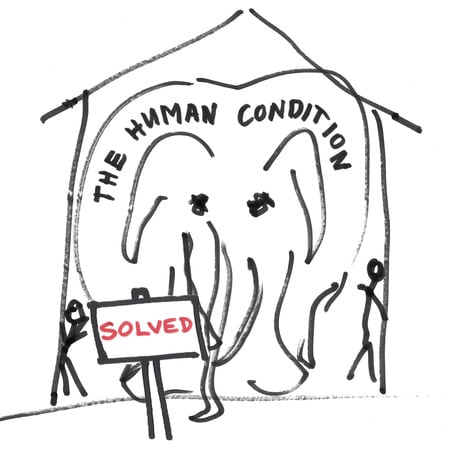
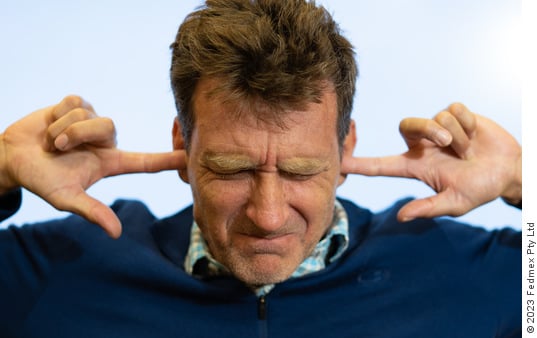


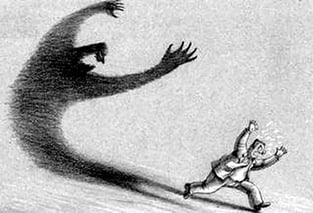
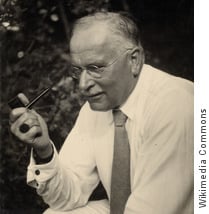



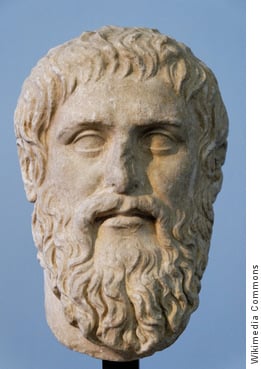
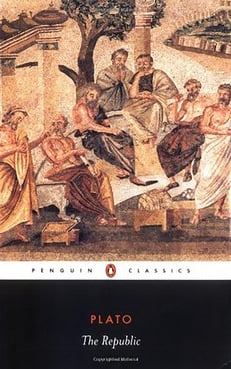
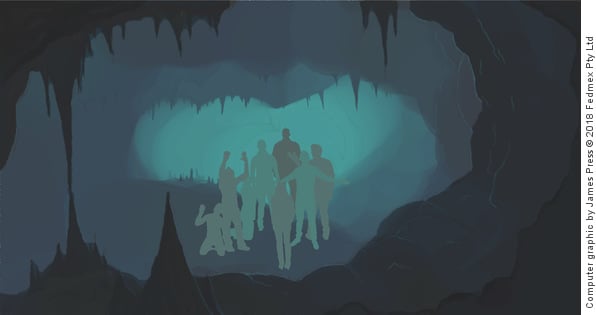


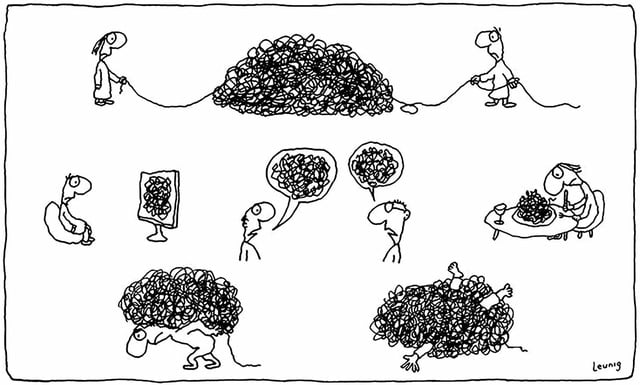

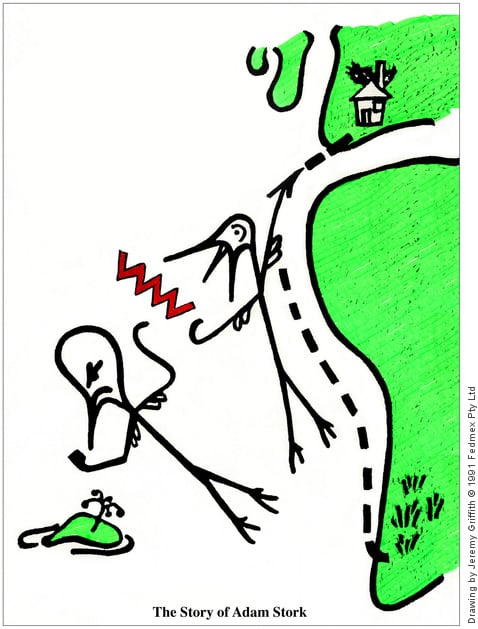
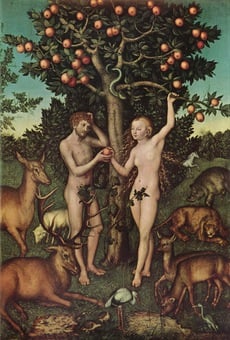
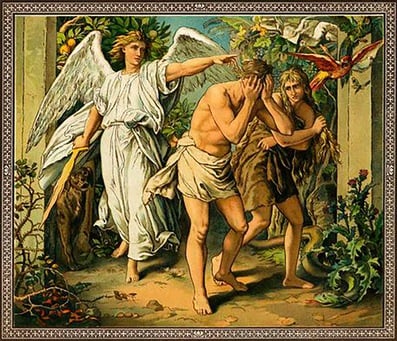
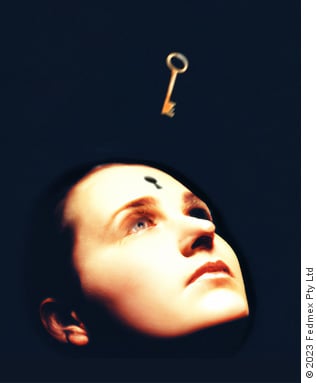
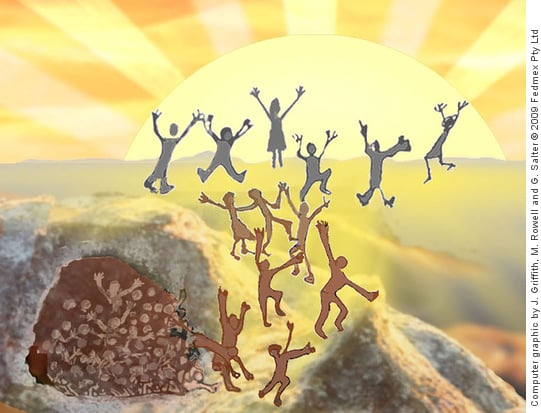
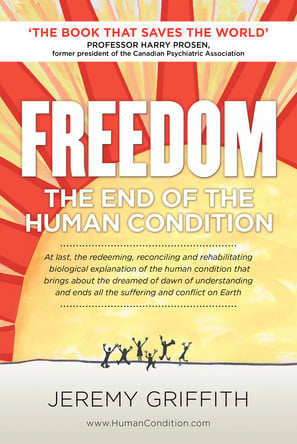
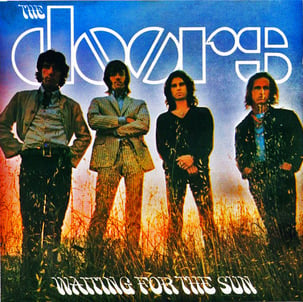
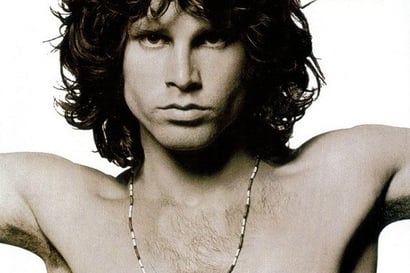

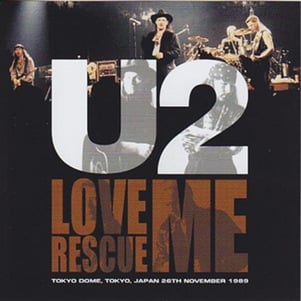


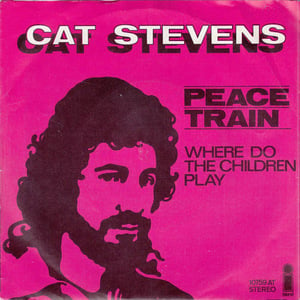
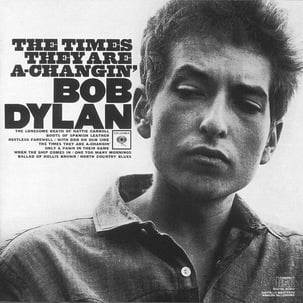
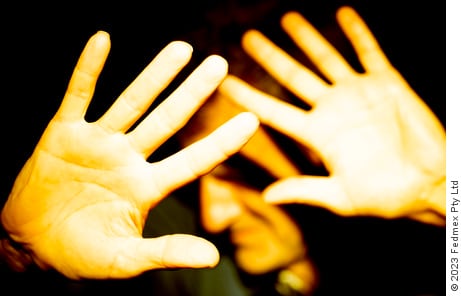
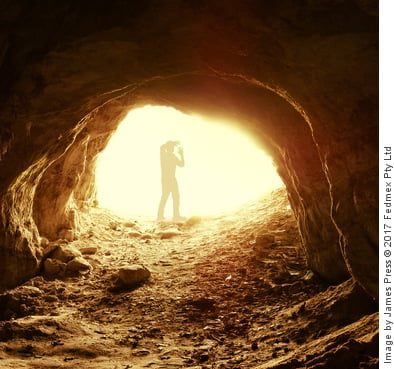
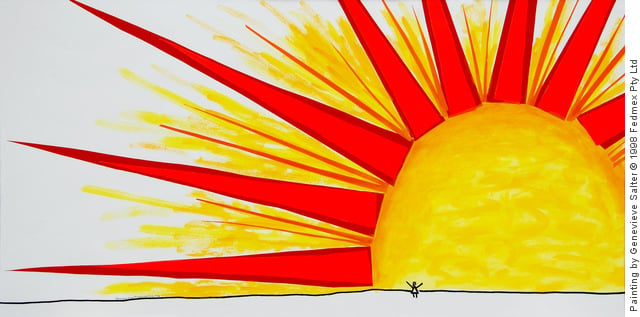
Please wait while the comments load...
Comments